What bird lays blue eggs?
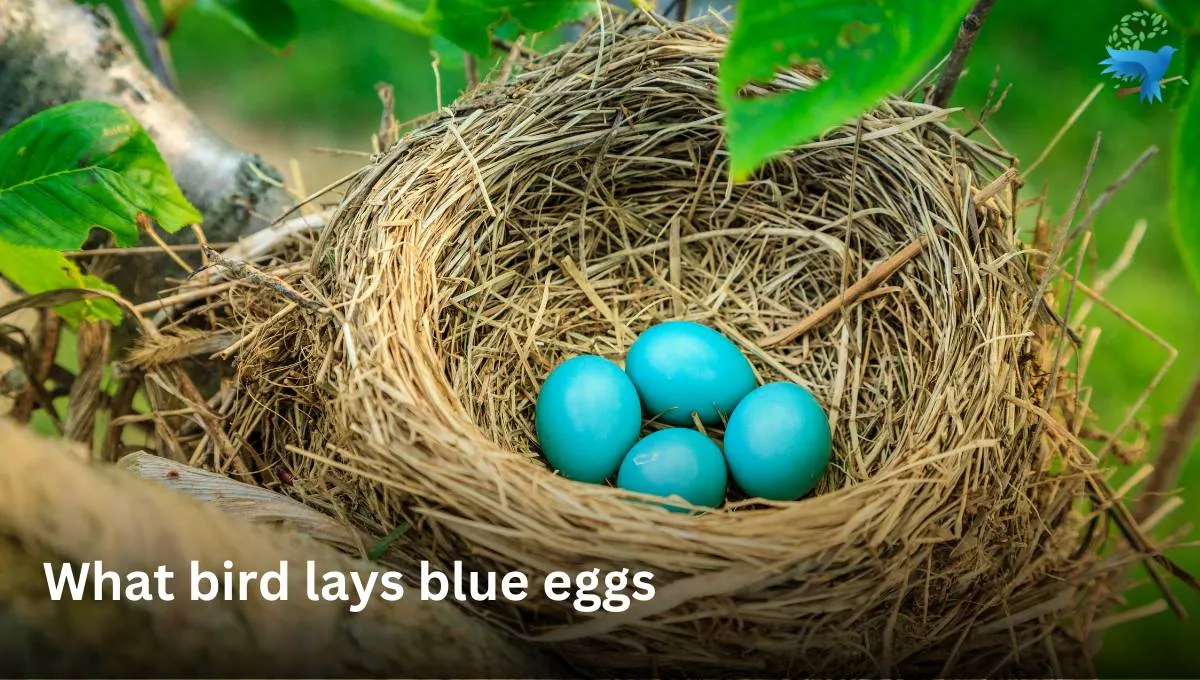
Birds eggs can display a wide variety of shapes, colors, and sizes. But, some of the most beautiful birds eggs are blue!
Some bird species lay stunning blue or blue-green eggs. Why don’t they just lay white eggs? What purpose do blue eggs serve? Which birds lay blue eggs? See this article to unveil the mystery of this question.
What bird lays blue eggs?
Several birds lay blue eggs. The blue color of the egg is determined by a pigment present in the oviducts of female birds.
As an egg passes through these ducts, the pigment coasts it, giving it a blue color. The blue color provides camouflage to the eggs in hostile environments, protection against UV rays, and identification for the parents of birds.
Aside from that, certain foods probably also help birds generate blue pigments.
List of bird that lays blue eyes:
- Eastern Bluebird
- American Robin
- European Robin
- Dunnock
- California Scrub-Jay
1. Eastern Bluebird
Eastern Bluebird is a small North American thrush species. It displays sexual dimorphism, wherein the males have blue heads, wings, and back with a brownish-red patch on their chest.
While females are duller in comparison and have a grey head and back with touches of blue here and there. The bluebird can live for 6 to 10 years, the longest record lifespan for a bluebird is 10 years and five months.
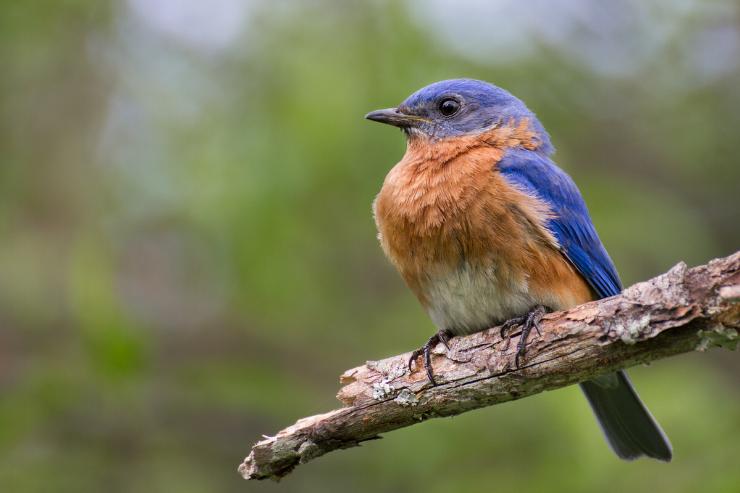
Size and wingspan of Eastern Bluebird:
- Size: 6.3-8.3 in (16-21 cm)
- Wingspan: 9.8-12.6 in(25-32 cm)
- Weight: 0.95-1.20 oz (27-34 g)
The bluebird is found east of the Rockies, southern Canada to the Gulf states, and southeastern Arizona to Nicaragua. Also, they are found in open woodlands, farmlands, and orchards.
They mostly eat insects wild fruit, and berries. Sometimes have also been observed capturing and eating larger prey items such as shrews, salamanders, snakes, lizards, and tree frogs.
Their nests are small, cup-like structures lined with grass, feathers, stems, and hairs. Each female lays three to seven light-blue or, rarely, white eggs. Natural predators of eggs and nestlings can include American black bears, eastern chipmunks, fire ants, and more.
2. American Robin
The American robin bird is a migratory bird of the true thrush genus and Turdidae, the wider thrush family. It is active mostly during the day and assembles in large flocks at night.
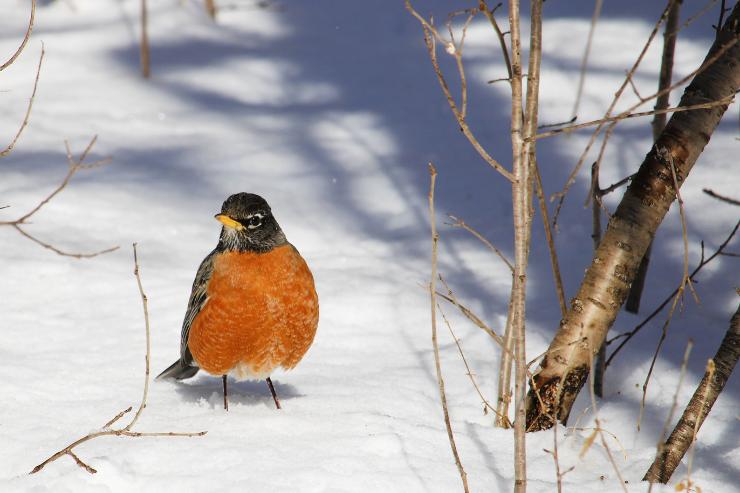
They are gray-brown birds with warm orange underparts and dark heads. In flight, a white patch on the lower belly and under the tail can be conspicuous. Females have paler heads that contrast less with the gray back compared with males.
- Size: 9.1 to 11.0 in (23 to 28cm)
- Wingspan: 12 to 16 in (31 to 41 cm)
- Weight of male: 2.5 to 3.3 oz (72 to 94g)
- Weight of female: 2.1 to 3.2 oz (59 to 91 g)
The robins live in woodlands, suburban backyards, parks, and grasslands with shrubs. Also, it can be found year-round in the continental United States, and some migrants north to spend summers in Alaska.
Its diet primarily consists of around 40% small invertebrates (mostly insects), and 60% wild and cultivated fruits and berries.
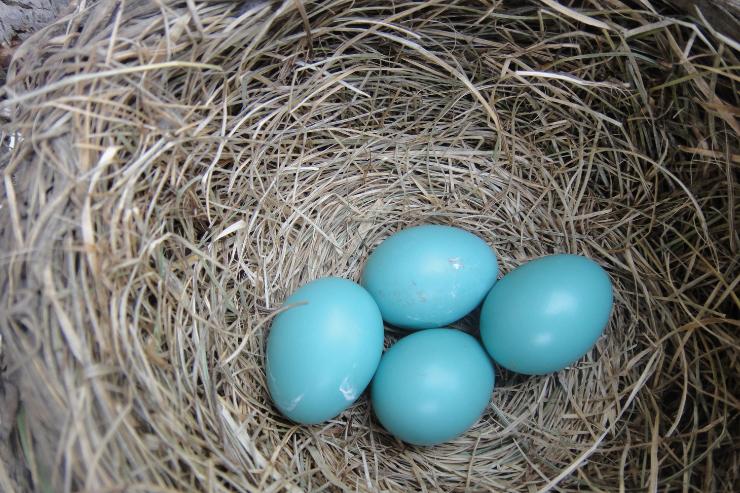
Female robins lay only one bright blue egg per day and typically lay three or four eggs total, seldom a clutch of five. It is one of the earliest bird species to lay its eggs and started to breed shortly after returning to its summer range from its winter range.
3. European Robin
The European Robin also known as robin redbreasts, is a small insectivorous passerine bird. It belongs to the chat subfamily of the Old World flycatcher family.
Both females and males are similar in coloration, with an orange breast and face lined with grey, brown upperparts and a whitish belly.
Size and weight of the European Robin
- Size: 4.9-5.5in(12.5-14.0 cm)
- Weight: 0.56-0.78 oz(16-22g)
- Wingspan: 8-8.5 in(20-22cm)
Robin is found across Europe, east to Western Siberia, and south to North Africa. Also, it is sedentary in most of its range besides the far north.
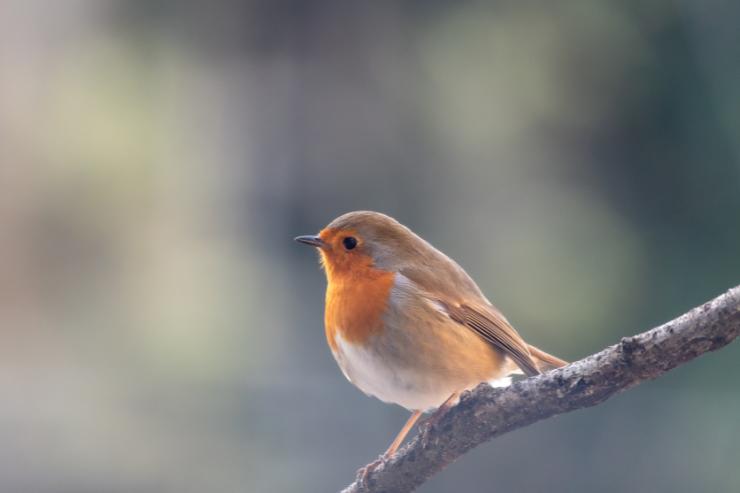
They feed mainly on insects and spiders but also eat fruits, berries, and seeds during winter.
European Robin starts laying their eggs between mid-April and mid-August, with baby chicks fledging after around two weeks. During the breeding season, male robin birds usually initiate their morning song an hour before civil sunrise and usually terminate their daily singing around thirty minutes after sunset.
4. Dunnock
Dunnock is a sparrow-like bird, which is the most widespread member of the accentor family. It has grey and brown plumage. Likewise, it is brownish underneath and has a fine pointed bill.
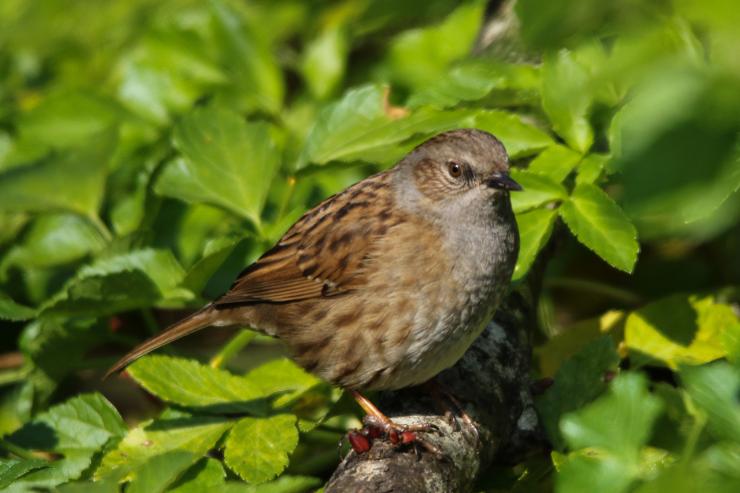
It is a small songbird, with a size of 5.3-5.5 in(13.5-14 cm). Dunnock birds are native to large areas of Eurasia, inhabiting much of Europe including Lebanon, northern Iran, and the Caucasus.
Dunnocks are the only commonly found accentor in lowland areas. They eat both small insects and small seeds, as well as spiders and small worms. In winter, the food becomes largely seeds.
A female bird will lay a clutch of 4–5 eggs, which are smooth, glossy blue, and can have reddish spotting. They have a width of 14mm and a length of 19mm, making them very small.
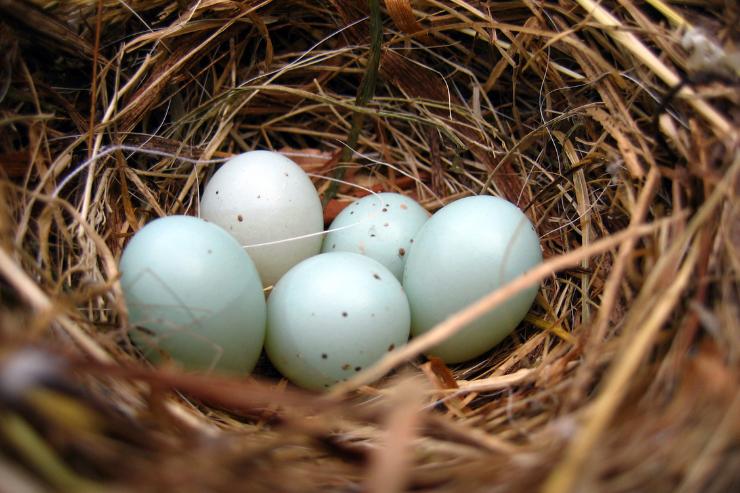
It nests in hedges, shrubs, and other similar areas within dense regions because Dunnock is very shy and stays away from crowds.
5. California Scrub-Jay
California Scrub-Jay is a medium-sized bird, while many refer to scrub jays as “blue jays”, the blue jay is a different species of bird entirely.
Its life span is approximately 9 years. The population of California Scrun-Jay is being adversely affected by the West Nile virus, particularly in California Central Valley.
It has long tails and small bills. The wings, head, and tail are blue, the back is sandy brown or gray, the underside is gray to white, and the throat is distinctively white.
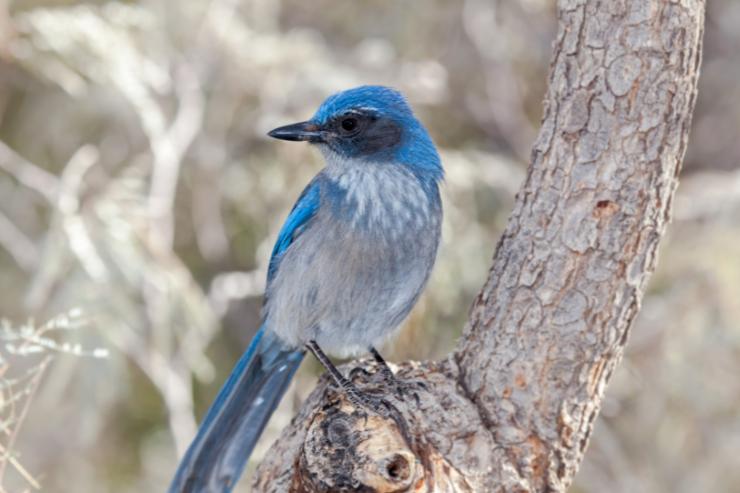
Size and wingspan of California Scrub-Jay
- Size: 11-12inches(27-31 cm)
- Wingspan: 15 inches(39cm)
- Weight: 2.8 oz(80g)
They inhabit areas of low scrub, preferring pinon-juniper forest, oak woods, and edges of mixed evergreen forests. Also, it inhabits suburban gardens. It does not migrate.
California Scrub-jay eats mainly insects and fruits during spring and summer. While they switch to nuts and seeds during fall and winter, largely acorns.
It built nests low in trees or bushes. It lays one to five eggs, and the female incubates the eggs for about 16 days. Also, the young California Scrub Jay leaves the nest about 18 days after hatching.
Conclusion
Blue eggs are an amazing rarity in the bird world. Several avian species, such as the Eastern bluebird, American Robin, Dunnock, and more lay these unique eggs.
The color of a bird egg can reveal significant details about its nestling and reproduction activities.
Every bird species has unique traits when it comes to laying these exquisite blue treasures, whether it is the pale blue eggs of the American robin.
FAQ
Are all blue eggs the same shade of blue?
No, not every blue egg has the same blue hue. Varying bird species and even birds within the same species may display various shades of blue. The level of pigmentation and genetics are two factors that affect the intensity and color of the blue coloring.
Do blue eggs affect the health of birds?
Birds health isn’t affected by blue eggs. The blue coloration is mostly due to pigment stains on the eggshell; it does not affect the physiological health of the laying bird.






